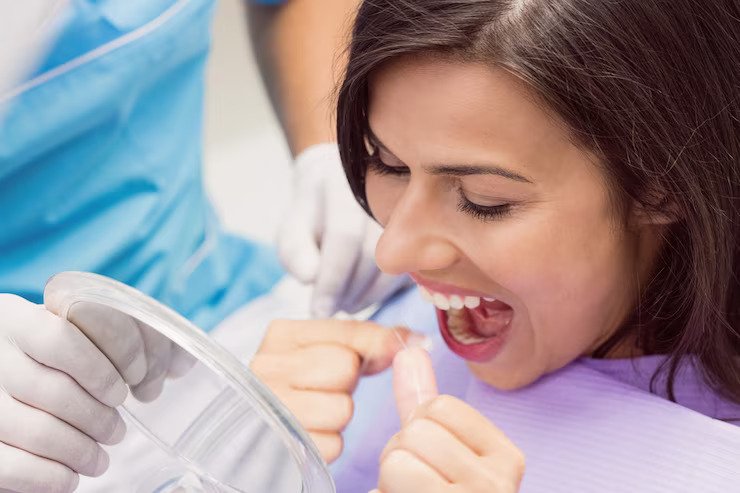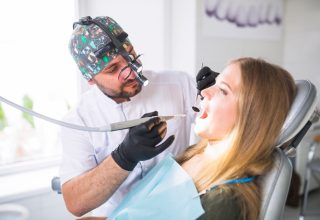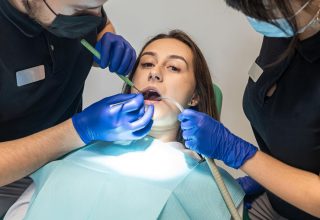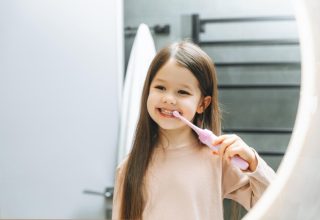Glass Ionomer Fillings In Primary Teeth: An Essential Treatment Option
As dental professionals, we continually strive to advance our knowledge of innovative materials and procedures that best serve our patients. One such material, which has increasingly gained traction, is glass ionomer.
In this post, we will delve into the specifics of glass ionomer fillings, especially in primary teeth, to understand why they are considered an essential treatment option for the younger demographic.
Contents
Understanding the Glass Ionomer Technology
Glass ionomer cements (GICs) have a unique place in dentistry. They are a type of restorative material, primarily composed of alumino-silicate glass powder (which provides fluoride) and an organic acid. When mixed, these materials form a biocompatible, tooth-coloured cement, offering several advantages over other restorative options.
The distinct feature of GICs lies in their ability to chemically bond to both enamel and dentin, eliminating the need for etching and bonding agents, and significantly reducing the risk of microleakage. Moreover, GICs’ inherent fluoride-releasing and recharging capabilities make them a key player in preventing caries, a highly prevalent issue in children’s dentistry.
Why Choose Glass Ionomer Fillings for Primary Teeth?
GICs’ properties make them particularly beneficial for pediatric dentistry, specifically when it comes to treating primary teeth.
The reasons for this are multifold:
Minimal Intervention and Preservation of Healthy Tissue
Treatment with GICs often involves less removal of tooth structure than other materials. This minimal intervention approach, coupled with the use of handpieces, allows us to preserve more healthy tissue, improving the overall experience for our young patients.
Bioactive and Fluoride Releasing
GICs are bioactive, which means they actively participate in the chemical reactions taking place in the oral environment. The most noteworthy of these reactions is the sustained release and uptake of fluoride, which can significantly deter the development and progression of caries in primary teeth.
Superior Aesthetics
GICs mimic the natural tooth color, making them a more aesthetically pleasing option, especially in the anterior region, which can enhance the child’s confidence and acceptance of the treatment.
Flexibility and Durability
Despite their softer nature compared to other materials, GICs demonstrate excellent longevity in low-load-bearing areas. Moreover, their thermal expansion and contraction closely match that of the natural tooth, leading to less stress at the tooth-restoration interface and consequently, reduced chances of restoration failure.
Clinical Applications of Glass Ionomer Fillings in Primary Teeth
GICs have a wide range of applications in primary teeth, owing to their versatile properties. Some of these applications include:
Class I and Class II Restorations
In low-stress areas, GICs have proven to be an effective treatment option. For class II restorations, the sandwich technique, where a layer of GIC is covered with a layer of composite, can be used to combine the benefits of both materials.
Atraumatic Restorative Treatment (ART)
ART is a minimally invasive procedure that involves removing carious tissues using handpieces and restoring the cavity with an adhesive material like GIC. ART is especially beneficial in children, as it eliminates the need for local anesthesia and reduces the fear associated with dental visits.
Fissure Sealants
The use of GICs as fissure sealants can help prevent caries in occlusal pits and fissures, especially in newly erupted molars that are more prone to caries.
Promoting a Positive Patient Experience
An often-overlooked advantage of glass ionomer fillings is their role in fostering a positive patient experience, particularly in pediatric cases. Young patients may feel anxious or fearful about dental treatments, especially those involving handpieces. GICs, with their minimal intervention approach, can help to mitigate this anxiety.
The treatment is quicker and less invasive, reducing the need for local anesthesia and consequently, making the overall dental experience less daunting for our young patients. This positive experience can set the foundation for a lifetime of regular dental visits and good oral health habits.
Future Developments and Research
While the present advantages of GICs are compelling, ongoing research promises exciting future developments. Efforts are underway to further enhance the mechanical properties and wear resistance of GICs, which could broaden their applications.
Nano-filled GICs are one such development that holds the promise of improved strength and aesthetics. Furthermore, research on bioactive glass and its incorporation into GICs may provide even greater bioactivity and remineralization potential. By keeping abreast of these advancements, dental professionals can ensure they continue to deliver the highest standard of care, utilizing the most effective and patient-friendly instruments and materials at their disposal.
Conclusion
In an era where prevention and minimal intervention are at the forefront of dentistry, glass ionomer cement is proving to be an indispensable instrument in our restorative armamentarium, particularly for primary teeth. The versatility of GICs, combined with their bioactivity, fluoride-releasing properties, and patient acceptance, underscores their role as an essential treatment option in pediatric dentistry.
As dental professionals, it is our duty to stay abreast of these advances, implementing them in our practice for the benefit of our patients. Let us continue to explore, adapt, and employ these materials and techniques that not only restore function but also foster a positive dental experience for our youngest patients.
Read Also:
- How To Treat Burned Gums From Teeth Whitening?
- How Much Do Veneers Cost? Can You Afford Them In Your Area?
- What Are The Signs Of Infection After Root Canal? – Causes, Symptoms, Treatment



